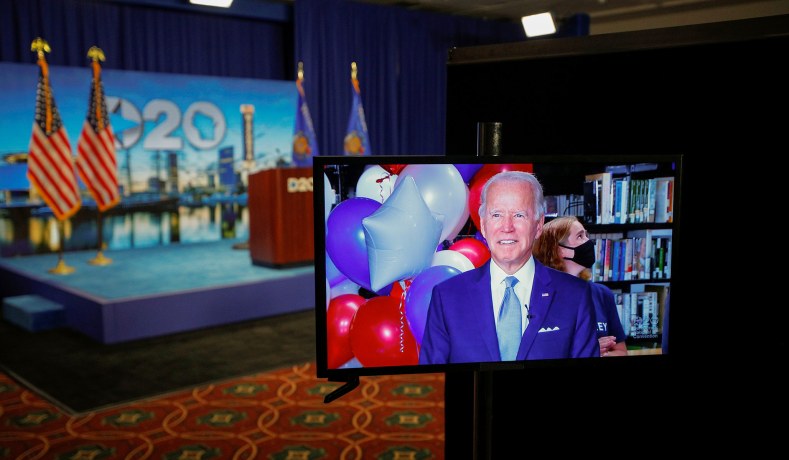
Every four years, the Democratic Party gets together and tries to put its best foot forward, the image that it believes is going to maximize its appeal in the upcoming election. Kyle Smith correctly observes that this means hiding much of the agenda that stirs the party’s activists — ending the use of fossil fuels, packing the Supreme Court, nuking the filibuster, confiscating guns, hiking taxes, massive new spending programs, etc.
But at the convention, the Democratic Party also tries really hard to be . . . nice. Expressions of anger either disappear or are heavily modulated. A party that doesn’t usually overflow with respect for flyover country and red states suddenly speaks fondly of small-town America. Sunny optimism abounds. The American flag, sometimes considered jingoistic and a little gauche in some Democratic circles, is ubiquitous again. The types of images featured in Reagan’s 1984 “Morning in America” ad return in the musical montages between speakers — farmer’s tractors, firefighters, veterans, schoolkids, and seniors.
The Democratic Party that appears on our television screens on nights like this doesn’t have any Antifa protesters, or anyone who sympathizes at all with rioters in the streets. It doesn’t appear to include anyone who thinks the pandemic restrictions have gone too far or become unreasonable. Everyone agrees to “listen to science,” and believes science always offers one clear answer that will satisfy everyone. Everyone makes it sound like getting everyone all the health care they want, at the price they want, will be a snap. (Wasn’t the Affordable Care Act supposed to do that?) Tributes to immigration — with no specification of legal or illegal — are gauzy, vague, and heartwarming. Immigration enforcement starts to seems like a bizarrely counterproductive policy of keeping out valedictorians and doctors and small-businessmen.
The country depicted by the Democrats during the convention is a cheerful America, free of racial tensions — the smiling faces are diverse, but everyone is getting along. Cops and African Americans engage each other with trust and goodwill. Businessmen of all sizes and environmental activists have no discernable disagreements. Urban gun-control activists and rural gun owners see eye to eye. Tax revenue will abundant, everyone will get what they want from government, and we will all live happily ever after. It’s an America where everyone seems to get along a lot better, in part because political and ideological divisions have disappeared.
It’s a happy, happy myth. You can’t really blame the party for trying to sell that image, but you can blame the electorate if they buy into it.




